Gone are the days of hellfire and brimstone speeches over the pulpit, but many people of faith often continue to feel the sting of moral failure and inadequacy associated with substance abuse.
Why?
One of the main reasons for this spiritual shame is the misconception that addiction is ultimately a matter of choice and is thus considered a ‘sin.’ Unfortunately, stigmas like this are pretty entrenched and hard to dispel. Here is where faith communities can wield significant influence in changing that perception.
As one of several Christian-based rehabilitation centers in Utah, Renaissance Ranch staff often encounter patients who struggle to reconcile their faith’s concept of sin and guilt with their powerlessness against addiction. They feel like their abuse has rendered them fallen and irredeemable. This breaks our hearts because it couldn’t be further from the truth.
As laid out in previous blogs, we believe substance use disorder (SUD) is a complex disease that may begin with a choice but, due to biological and emotional factors, can quickly spiral out of our control. Addiction thus becomes not a matter of will but a chronic disease that demands professional medical attention. It’s as much a sin as hypertension or asthma.
So what are some things faith communities can do now to erase the stigma of addiction once and for all? We’re happy you asked. Here are five suggestions:

(Tima Miroshnichenko/Pexels)
Educate
The key to breaking down addiction stereotypes is finding and sharing accurate information. You will discover a wealth of up-to-date facts on addiction, what it is, how it starts, the factors that feed into it, and how to seek treatment at www.SAMHSA.gov, the Substance Abuse and Mental Health Services Administration website.
Another great place to seek addiction and recovery training is the Hazelden Betty Ford Foundation’s Faith Partners program. The foundation unites people from across the religious spectrum to provide awareness and educational support to clergy and other faith leaders.
Faith leaders can share the knowledge they gain with their parishioners through seminars and workshops. They can also bring in guest speakers, such as a local substance abuse recovery center representative, to teach the congregation about addiction and how they can help support those caught in its web.
Last but certainly not least, a church can post educational information on its website, newsletter, and social media accounts.
Provide Support
Faith communities can provide safe spaces for those struggling with addiction by offering pastoral counseling and opening their doors to or facilitating support group meetings. By partnering with area drug rehabs and state and local health services officials, they also can assist in connecting people to professional treatment resources.
One example is the Church of Jesus Christ of Latter-day Saints Addiction Recovery Program. This support group is free and open to all community members regardless of their faith tradition. The curriculum is patterned after the 12 Step program and employs the beliefs and principles of the gospel of Jesus Christ as taught in the Church.
Participate in Advocacy Efforts
As the overdose crisis continues to grow year over year, communities of faith can lead the way in driving and supporting policy and system changes that will reduce discrimination and broaden recovery efforts. In addition, they can advocate for increased funding for faith-based treatment centers and programs, as these have been proven to lower relapse rates and the criminal recidivism often associated with substance abuse.
Partnering with other faith groups and public health systems is a great way to increase addiction awareness within the community and help those affected in a united, organized effort. To date, SAMHSA has awarded block grants to more than 800 faith-based community partners through its Community Substance Abuse Prevention Partnership Program.
In 2020, the state of Utah received a nearly $17 million block grant from SAMHSA. One example of how a portion of this money was applied to a faith community is the University of Utah’s Rural and Tribal Opioid Initiative. The grant sought to expand harm reduction education and services and reduce the stigma of interventions such as naloxone and medication-assisted treatment. The effort included the reservation lands of four Native American tribes and had the support of local tribal leaders.
Monitor (and Kindly Correct) Language
Words have power. And when used inappropriately, they can cause tremendous emotional damage. It’s crucial that words correctly identify the issue while not casting judgment on the person.
Faith leaders can do much to help their members avoid using stigmatizing language, such as “junkie,” “addict,” “drunk,” “alcoholic,” “clean,” and “dirty.” Instead, they can encourage people to use descriptions like “person with a substance use or alcohol disorder,” “a person in active use,” “a person in recovery or long-term recovery,” and “they tested positive or negative.”
Practice Inclusion
Whether heavily tattooed and wearing a biker vest or decked out in an expensive 3-piece suit, substance abuse doesn’t discriminate, so neither should we. Religious leaders can help their congregations build solid connections with the marginalized by welcoming them to worship and reaching out in fellowship after the service.
They can also incorporate messages of hope and healing in their worship and other activities to create an atmosphere of love, safety, and acceptance.
